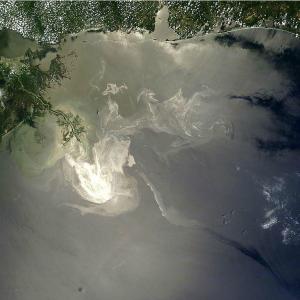- 57759 reads

Though we enjoy having fuel for our cars and electricity in our homes, technological and industrial progress often puts the natural environment at risk. The result is a variety of man-made environmental disasters ranging from fuel spills, nuclear meltdowns, and the careless usage and disposal of hazardous materials.
When these disasters inevitably occur, it can take decades or longer to return a local environment to a livable condition following large-scale contamination. For example, the Environmental Protection Agency has struggled to clean up asbestos in Libby, Montana since 1999. During this time, extensive cleanup efforts have impacted more than 1,700 properties. The EPA has removed more than 1.2 million tons of contaminated soil from the area, and these cleanup efforts are ongoing.
When companies began mining the asbestos-contaminated vermiculite in 1919, they didn’t know that asbestos dust caused health complications. For decades, the toxic dust spread around the mining sites, throughout the town, and beyond. Since asbestos does not biodegrade, the excess dust has remained intact in the air, on the ground, and in water sources. When W.R. Grace & Company began mining operations in 1963, they were aware of the health risks and chose not to warn workers or townspeople so as not to affect production.
Despite our efforts to reverse the effects of such disasters, some ecosystems may never return to their natural states. The 1989 Exxon Valdez oil spill that took place just off the Alaskan coast is an infamous example. According to a report by the National Oceanic and Atmospheric Administration, as of 2007 there were still 26,000 gallons of oil trapped in the sand along the coast. This kind of massive damage has the immediate effect of killing local wildlife and poisoning food sources as well as disrupting animals’ mating grounds for years to come.
Safety Precautions
In some cases, such as the asbestos contamination in Libby, we could have responded sooner to the ill effects of man-made disasters if the company profiting from the harmful process had taken safety measures and warned the public. Instead, they chose to value profit over human health.
Many other disasters are caused by human error or malfunctioning technology, which is more difficult to predict and prevent. Nuclear meltdowns are a prime example of the role of technological failures in causing significant damage to the environment and human health. However, variations between two major nuclear meltdowns show the difference preparations and safety practices can make.
In 1979, a Three Mile Island reactor experienced a malfunction in the cooling system that caused part of the nuclear core to melt. Because a safety culture and proper containment structures were in place, minimal radioactive materials were released from the reactor and no one was injured. This was not the case for Chernobyl in 1986. A flawed reactor design, inadequate safety preparations, and human error contributed to the release of massive amounts of radiation into the atmosphere. Thirty plant workers died within a few weeks of the accident, and the surrounding populations were exposed to radiation which may have led to a rise in certain health conditions such as thyroid cancer.
Communication as a Solution
An NPR interview with experts in disaster management explores trends in risk-taking within susceptible industries. Several members of this conversation refer to the need for stakeholders involved in disaster response and prevention to communicate more effectively internally, between organizations, and with the public.
Internal communication within agencies may be the most important aspect to consider in preventing disasters, according to former NASA astronaut James Bagian. He says that there are often misconceptions about the quality of communication within an organization. Those higher up in a company may feel their communication policies are working well, while those lower in the company may feel intimidated bringing up potentially disastrous problems. Bagian suggests the solution to this problem is for leadership to constantly offer avenues and techniques to break down those real or perceived obstacles. This would keep open communication and ensure safety, early detection, and timely responses when disaster strikes.
Though these events are harmful, they also offer us the opportunity to examine and improve our practices in order to prevent future incidents. The National Incident Management System (NIMS) was created as a tool to standardize communication, resources, and preparation strategies related to disasters. Similarly, the National Response Framework (NRF) is a guide created to offer adaptable strategies, concepts, and authority roles for a variety of groups related to emergency management. By following these procedures and prioritizing timely communication, we can better equip ourselves to create a safety culture, preventing and minimizing damage to our health and the environment.
For information on reducing the mitigation of COVID-19, see: Ultraviolet Disinfection. For energy savings see: Made in America LED Lighting, and for added energy savings see: HVAC Optimization. Plus, Personal Protection Equipment is also key way to help prevent the increase of the COVID-19 crisis.

